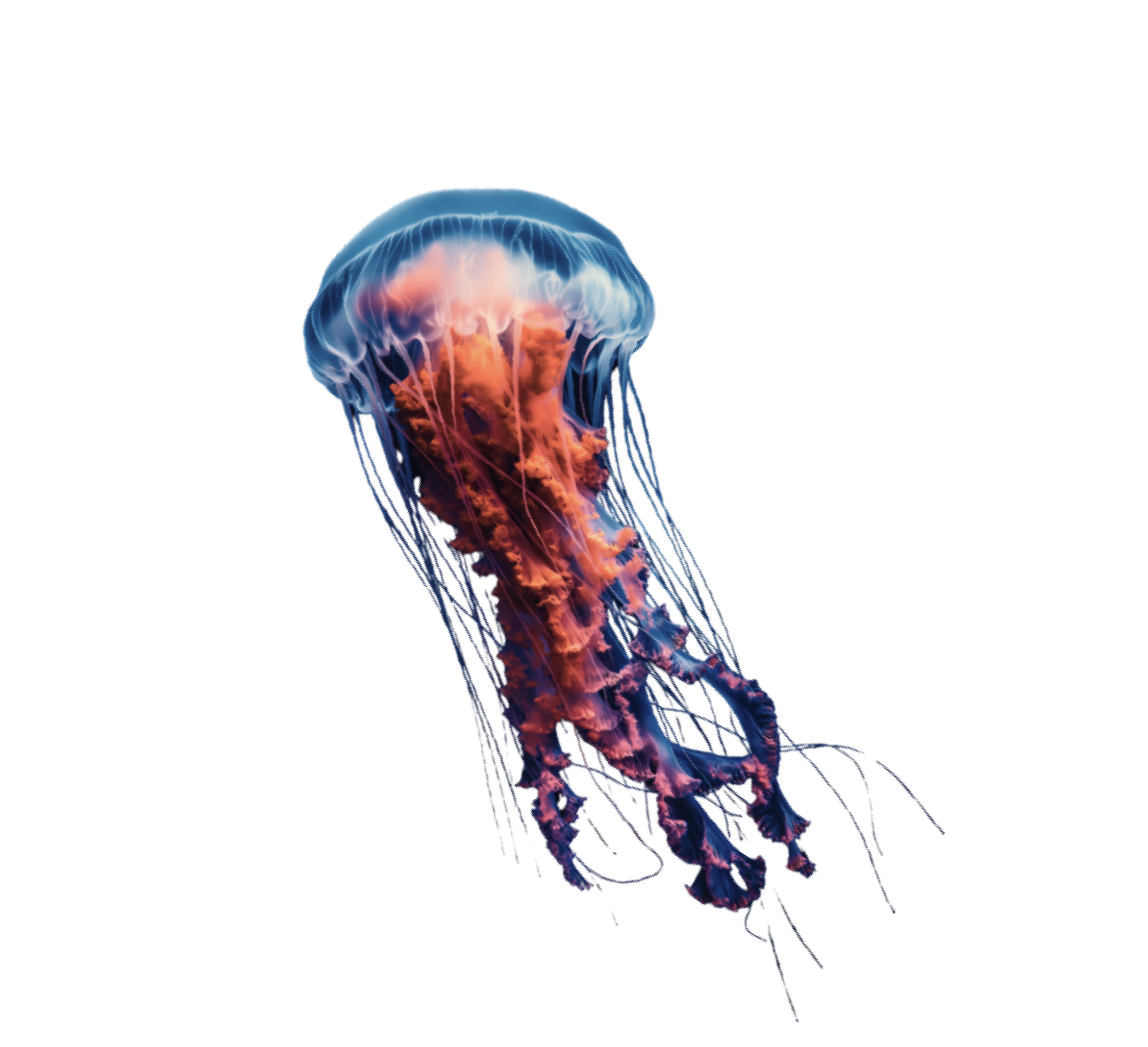Science and Community
Jellyfish Stings: What You Need to Know
A Global Problem
An estimated 150 million people worldwide are stung by jellyfish every year. Jellyfish are found in oceans of all temperatures, and certain seasons or conditions can lead to an increase in jellyfish abundance. For example, in 2018, warm weather and tides caused a spike in jellyfish numbers along Florida beaches, with nearly 600 people stung in a single weekend. (Thousands of beachgoers stung by jellyfish in Florida; NBC News Report).
The Venom of Jellyfish
Jellyfish venom contains many toxins, some of which have evolved as defense mechanisms to deter predators. These toxins can cause a range of symptoms, including:
- Pain (ranging from moderate to severe)
- Allergic reactions
- Arrhythmias (irregular heartbeats)
- Other systemic effects such as nausea or fever
When and Where?
Jellyfish blooms vary by geographical location and time of year. To stay safe:
- Stay informed: Ask local authorities or lifeguards about current conditions.
- Be proactive: Wearing a wetsuit can provide additional protection.
The Science Behind the Sting
Jellyfish tentacles are equipped with specialized cells called cnidocytes, unique to members of the phylum Cnidaria. Each cnidocyte contains a capsule-like structure called a nematocyst, which houses a coiled, thread-like tube.
When triggered by physical or chemical stimuli, the nematocyst ejects rapidly, releasing venom.
Cnidocytes are highly sensitive and can activate upon contact with prey or skin.

Symptoms of a Jellyfish Sting
For most people, jellyfish stings cause:
- Red welts and swelling
- Moderate to severe pain (lasting 2-3 days)
In rare cases, systemic symptoms may include:
- Nausea and vomiting
- Fever and muscle cramps
- Shortness of breath
If symptoms worsen, seek medical attention immediately.
(Source: hmli-dan-dive-medical-reference.pdf)
What to Do If You’re Stung
Step 1: Act Quickly
- Seek first aid immediately. Pain left untreated for 2-3 hours can become harder to manage.
- Keep a first-aid kit in your beach bag, including a travel-sized jar of StingMaster Cream.
Step 2: Avoid These Mistakes
- Do NOT rub the area. This can worsen the sting by spreading tentacles or unfired nematocysts.
- Do NOT use freshwater. It may trigger additional nematocyst discharge.
Step 3: Follow These Steps
- Remove tentacles carefully (use gloves or tweezers). Wash your hands thoroughly afterward.
- Flush the area with seawater to remove unfired nematocysts.
- Dry the area and apply StingMaster Cream. Many users report pain relief within minutes.
- Apply heat: Use a heat pack (e.g., Lionfish Zookeeper packs) or hot water (~130°F / 54°C) to reduce pain. Reapply StingMaster after drying.
Common Myths: What Doesn't Work
- Cold compresses or ice: These can worsen the pain.
- Urinating on the sting: Despite its pop-culture fame, there is no scientific evidence supporting this practice.
When to Seek Medical Help
Seek medical attention immediately if:
- The victim is very young or elderly
- A large area is affected
- Symptoms such as shortness of breath, chest pain, or severe weakness develop
What About Vinegar?
While vinegar is traditionally recommended, studies show it can cause massive nematocyst discharge in certain species (e.g., Portuguese Man o’ War). Current guidelines (AHA 2010) still recommend vinegar for jellyfish stings, but caution is advised.


